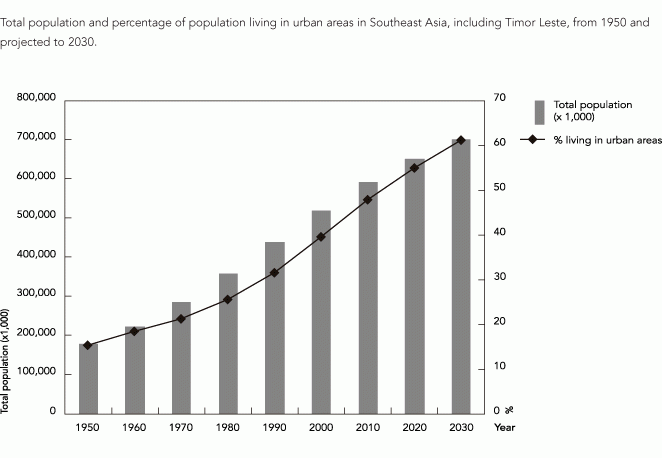Over the past several decades, the SE Asian region has seen the progressive increase in the size and populations of its cities with the population approximately doubling from 760 million in 1985, to 1.6 billion by 2010, equating to around 42% of the total population (Ismail, 2014). Over half the world’s expansion in urban land over the next two decades is predicted to occur in Asia (Schewenius et al. 2014), with large proportions of this occurring in relatively rural countries such as Vietnam and Myanmar. Due to the increasing human population, the need for urban spaces has increased, thus governments have taken measures to clear more land in order to fulfill this growing demand. The increasing demand of land causes deforestation, as trees are felled to create more land for building infrastructure to cater to the growing population.
 I= PAT Model
I= PAT Model
This equation was first proposed by two scientists (Ehrlich and Holdren) as a way to calculate the impact of humans on the environment. Driving Forces that underlie the environmental problems include three major variables
- P = size of the human population.
- A= the level of material affluence
- T = characteristics of the technologies that produces affluence, also functions as factors that influence how technologies are developed and used and differ from country to country.
- I = the total impact of human activity on the environment.
- (Gardner & Stem, 2002)
Therefore, this model helps to illustrate the correlation between an increasing human population and the increase in impact of human activity on the environment. In this case, a growing population will result in more clearing of forested area to build infrastructure. However, it is important to note that an important feature of the I= PAT Model would be that the major causes of environment degradation can be traded off. In the case of deforestation, technology might worsen the impact on the environment as technology such as the use of machines make commercial agriculture easier.
